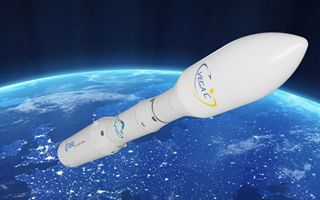(Finance) – The Council of theEuropean Space Agency (ESA) adopted a resolution on European launch services and continued European access to space which lays the foundations for the commercialization of the Vega launcher developed by ESA, by its prime contractor, Avio.
The pitchers Vega They joined the family of rockets developed by ESA with their first flight in 2012 and commercial exploitation starting in 2015. Vega-Can enhanced version of the Vega with a larger fairing debuted in 2022. Both versions were built under the responsibility of the prime contractor Avioa company listed on Euronext STAR Milan and active in the construction and development of space launchers and propulsion systems, and marketed by Arianespace.
“A new step has been taken in the implementation of the decisions taken at the Seville Space Summit: Arianespace will complete the next six missions of the Vega launcher before passing the baton to its partner Avio,” declared Stéphane Israël, CEO of Arianespace “We will work with ESA and Avio to ensure that this transition is a success in the interests of customers. Arianespace teams are in the starting blocks to prepare for the operations and ramp-up of the Ariane 6 launcher together with ArianeGroup.”
Arianespace and Avio have agreed that Arianespace will remain the launch services provider and operator for Vega/Vega-C until Vega flight 29 (VV29)expected for the fourth quarter of 2025. For Vega-C launches after VV29, customers under contract with Arianespace will be offered the option to transfer their contracts to Avio as the new launch services provider and sole operator of Vega.
“We welcome the steps taken by the European Space Agency to evolve the governance of the launcher sector in Europe and we look forward to starting the commercial operations of Vega-C to support customers with full commitment and dedication,” he said. Giulio Ranzo, CEO of Avio.
Today’s Resolution includes a definition of what constitutes a “European Launch Service“, reads a note from the Colleferro company. This is necessary to ensure autonomous access to space for Europe and includes considerations on the nationality of the launch service provider and the locations of launch system development, manufacturing and launch operations.
